Get PeakVisor App
Sign In
Search by GPS coordinates
- Latitude
- ° ' ''
- Longitude
- ° ' ''
- Units of Length

Yes
Cancel
Share ×

Scan the QR code and open PeakVisor on your phone
❤ Wishlist ×
Choose
Delete
The scenic Nature Park Žumberak - Samoborsko Gorje is located on the border between Slovenia and Croatia. The park is home to dense forests, towering peaks, and raging waterfalls that will leave you in awe. There are 85 named mountains in Park Prirode Žumberak - Samoborsko Gorje. The highest and the most prominent mountain in the park is Sveta Gera (1,178 m/ 3,864 ft).
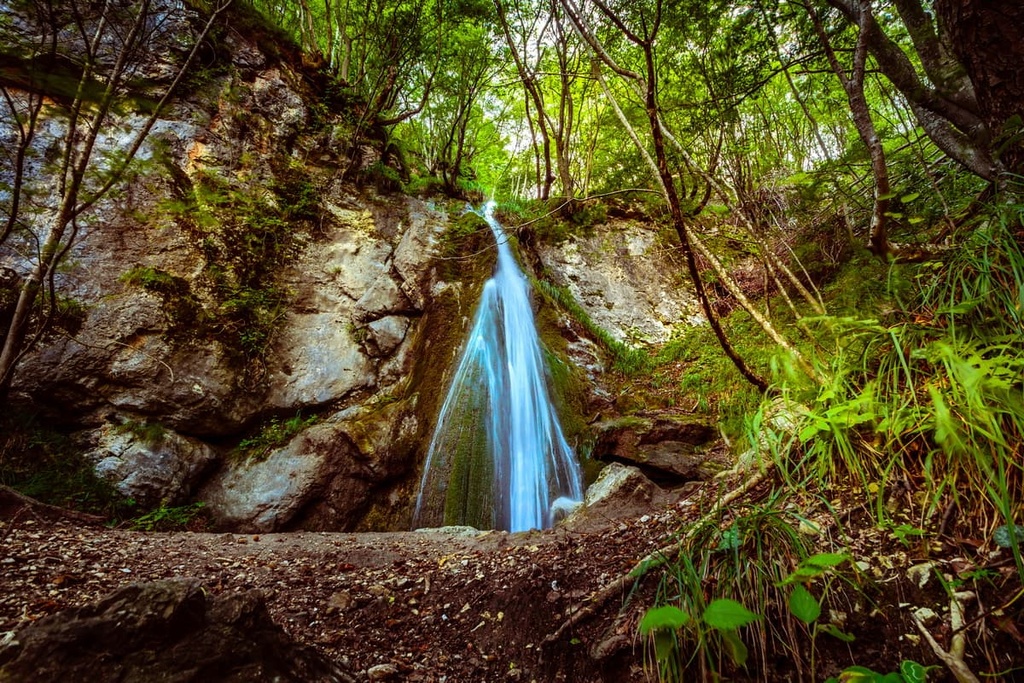
Nature Park Žumberak - Samoborsko Gorje (Park Prirode Žumberak - Samoborsko Gorje/Žumberak - Samobor Hills Nature Park) is a protected area that’s managed by the Croatian government.
The park was designated in 1999 and its creation placed both the Žumberak Mountains (Žumberačka Gora/Gorjanci) and the Samobor Hills (Samoborsko Gorje) under protected status. This mountainous nature reserve contains 333 sq. km (206 sq. mi) of hilly terrain in the southern Žumberak Mountains and Samobor Hills.
Žumberak - Samoborsko Gorje Nature Park is a green oasis in the middle of Croatia's northern hills. It contains ridges of limestone rocks that stretch up to the old town of Samobor and the village of Okić. Slovenia borders the park to the north while the Pokuplje region of Croatia is located to the south. The closest towns to the park are Samobor, Jastrebarsko, and Ozalj.
The park encompasses a diversity of terrain as it includes parts of the Pannonian Basin, Dinaric Alps, and Alps within its borders. The highest peaks in the nature park are Sveta Gera (1,178 m/ 3,864 ft) and Trdinov Vrh (1,080 m/ 3,871 ft). They are located in Zagreb County and Karlovac County, respectively.

Unlike some of the other protected areas in Croatia where the main attraction is more clearly defined, most visitors come to Žumberak - Samoborsko Gorje to see its mosaic of different landscapes. Some of the most important areas in the park include the Slapnica River protected landscape, Japetić Special Woodland Reserve, and the old town of Okić.
The valley of the creek of Slapnica also has a lot to offer for visitors to the park. The name of the creek comes from the Croatian word for ‘cascade,’ which is fitting as the river features many waterfalls, the highest of which is 40 m (131 ft) tall.
One of the highest peaks in northern Croatia is Sveta Gera (1,178 m/ 3,864 ft). In the past, people used to host livestock fairs at a meadow on top of the mountain. Nowadays, the mountain is a popular destination among hikers and nature enthusiasts.
Meanwhile, Japetić Hill (879 m/2,883 ft) is the highest peak in the Samobor Hills. On clear days, it provides a view of various peaks in Croatia's mountainous region all the way to Triglav in Slovenia.
History lovers in the park can also visit the Archaeological Park in Budinjak, where they'll be able to see preserved examples of traditional village architecture, remains of ancient fortified cities, and evidence of the Uskoks, who were rebels who fought against the Ottoman rule.
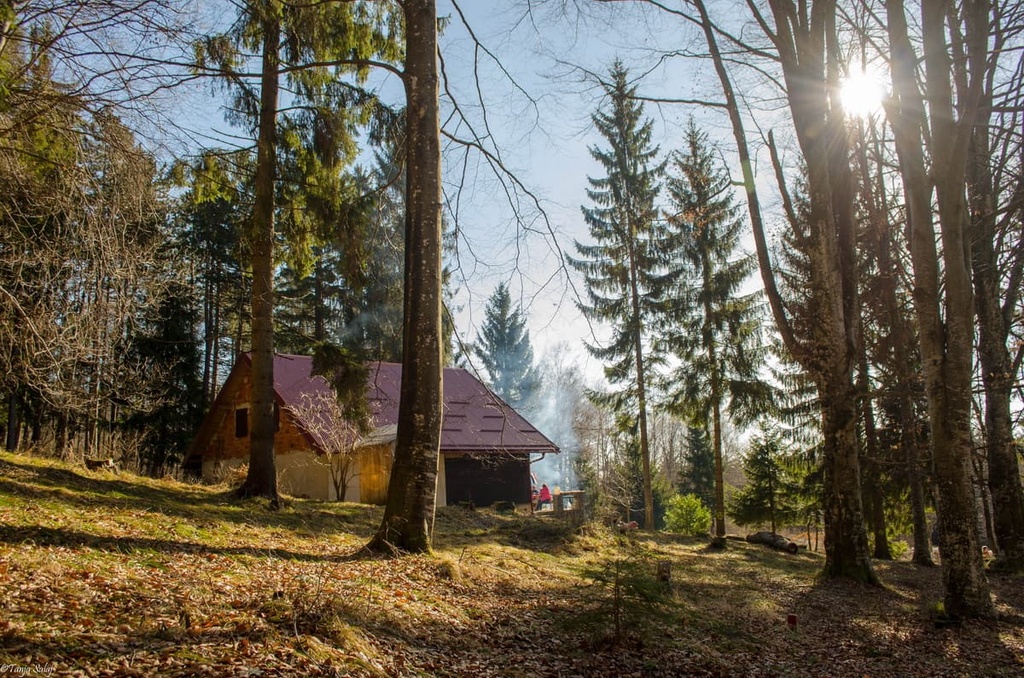
The Žumberak - Samobor area is situated in northern Croatia, which is one of the least densely populated areas in the country. Since this area is so rugged and inaccessible, the land in the park has only been minimally impacted by human activity. As a result, the park features primarily wild landscapes, though there are a few pasturelands, orchards, fields, and meadows interspersed throughout the area.
The landscape in Nature Park Žumberak - Samoborsko Gorje is located in an interesting area where it is surrounded by the Dinaric Alps to the south and the Alps to the north.
That said, some 90% of the park's surface is typical limestone karst topography, which is common in this region, particularly in the Dinarides. Steep-sided valleys and even more unusual formations such as karst caves are visible throughout the park.
The park itself features 140 known caves, the deepest of which is believed to be Dolača. Researchers estimate that Dolača is 155 m (508 ft) deep and 1,262 m (4,140 ft) long. Meanwhile, the longest known cave in the park is Provala, which researchers believe is at least 1,862 m (6,108 ft) long.
Furthermore, the park is located on the border of the so-called Dinaric carbonate platform and Inner Dinarides. In other words, it is situated between the Dinarides, the Alps, and the Pannonian Basin. The Pannonian Basin is primarily a low-lying area with terraces, rivers, and sub-Alpine countryside that has steep ridges and crags.
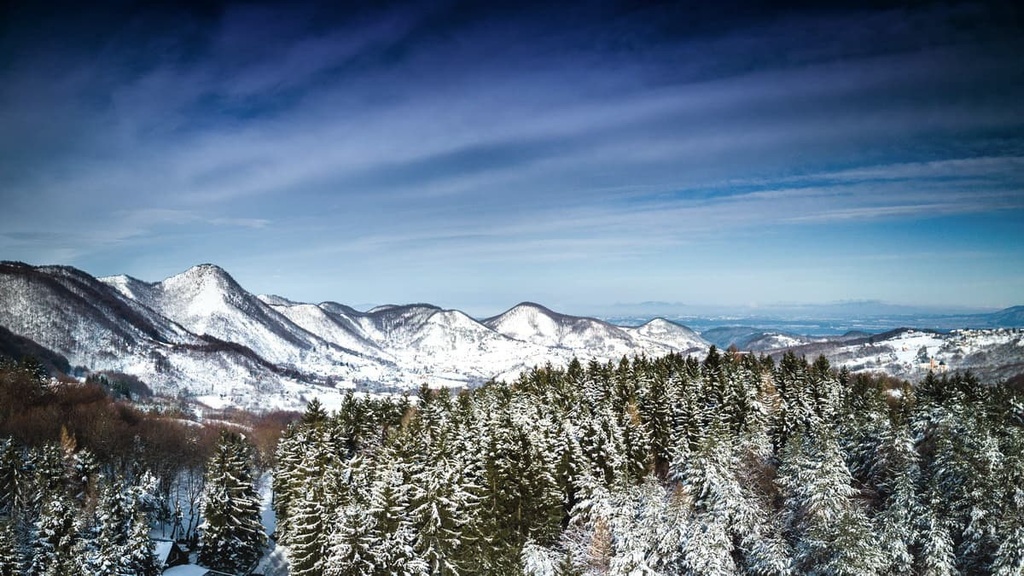
The majority of the park's terrain features sedimentary rocks. These sedimentary rocks date back to the time of the ancient Tethys and Paratethys seas, which once covered much of what’s now the Mediterranean Basin. The Parathethys was eventually separated from the Tethys to the south by the creation of a number of mountain ranges, including what’s now the Dinarides, Alps, Carpathians, Elburz, and Taurus mountains.
Geological processes started to shape the landscape in the park during the Paleozoic, about 250 million years ago. There are a number of sedimentary rock formations in the park that date back to this time and to more recent periods. For example, there are Triassic dolomites in the park as well as Jurassic limestones and Cretaceous flysch.
In more recent years, the park’s topography has been shaped by the erosive powers of wind and water. There are large clay, sand, gravel, and gypsum deposits located around many of the park’s rivers and creeks, all of which date to the Quaternary, which is the current geologic period.
The park’s topography becomes noticeably more rugged as you move toward its northern boundaries. This area has seen minimal human influence over the centuries due to its mountainous nature. You can find most of the highest peaks in the park in this area, including Sveta Gera (1,178 m/ 3,864 ft), Trdinov Vrh (1,080 m/ 3,871 ft), Bezimeni Vrh (1,019 m/ 3,343 ft), and Ravna Gora (1,007 m/ 3,303 ft).
The constant rolling hills in Žumberak - Samoborsko Gorje Nature Park feature a mix of natural and human-made ecosystems. The park itself is relatively biodiverse as it features 40 plant species per square meter (per 10 sq. ft). There are also many animal species that live in the park, including bears and wolves.
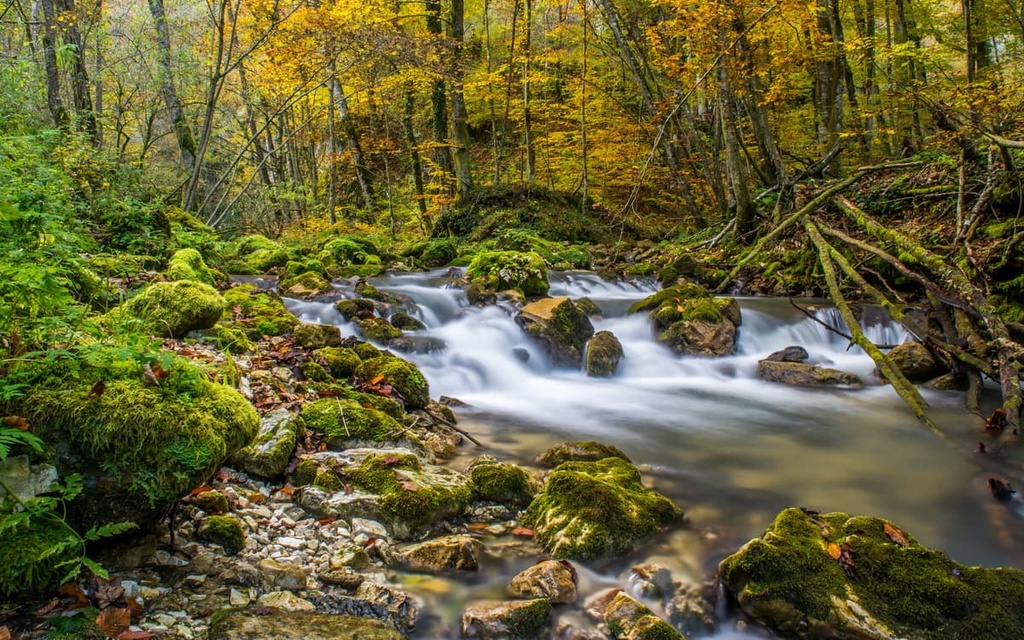
With respect to the human-made ecosystems in the park, over the course of millennia, the people who lived in the region have cleared sections of woodland to create meadows, pastures, and even around 190 artificial ponds. These open areas feature their own unique ecosystems, though they have become endangered in recent decades.
The park's wide range of plant life is also due to its geographical position between the Alps, Dinarides, and Pannonian Basin and its proximity to the Mediterranean Sea. There are more than 1,000 different plant species that live in the park out of the more than 5,000 that live in all of Croatia.
Due to the fact that the region is home to so many different species, the park is a very important area for protecting Croatia’s plant life. Many of the species that live in the park are rare and at least 11 are listed as endangered while 4 are considered to be critically endangered. Another 28 of these species are listed as “sensitive,” so they, too, are at risk of becoming endangered in the future.
The plants that you’ll find in Nature Park Žumberak - Samoborsko Gorje vary depending on the specific ecosystem that you’re traveling through. In the park’s mountain meadows, you can find the small pasque flower (Pulsatilla nigricans) and the endemic species Croatian pink (Dianthus croaticus), which features beautiful pink flowers. More than 40 species of orchids grow in this park, too, including the bee orchid (Ophrys apifera).
The park’s forests are home to a number of species that are found in relatively few other places. These include the endangered Croatian iris and Blagay’s daphne. In the lower-elevation woodlands of the park, the most common types of trees are sessile oaks and hornbeams, while downy oaks and hop hornbeams tend to live on the higher slopes in the park alongside beech forests.
So far, there have been 377 mushroom species found within the park, too. In 2007 and 2008, scientists also discovered 79 lichens in the park, 3 of which are on Croatia's Red List of lichens as being threatened or endangered.
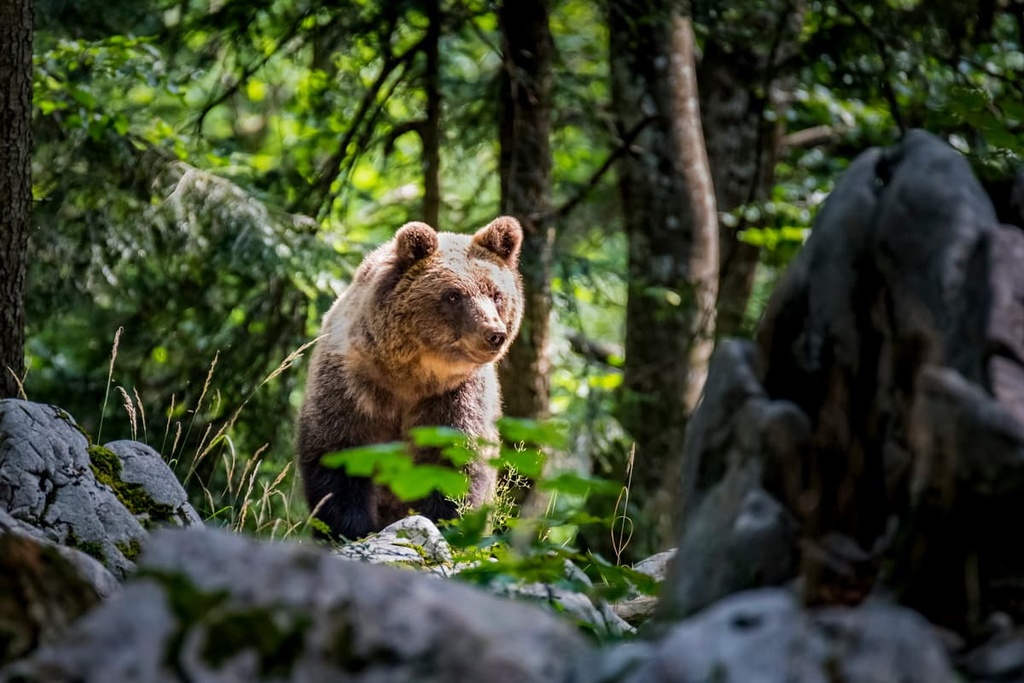
The park area is also home to many animal species. There are bears and wolves that live in the park as well as smaller mammals, amphibians, and reptiles. Researchers have also identified at least 110 species of birds that either nest or feed in the park.
In Nature Park Žumberak - Samoborsko Gorje, you can also find a number of ponds that serve as important hatching locations for many of the region’s amphibians. The park is also home to a number of snake species, including the regionally protected horned viper (Vipera ammodytes) and grass snake (Natrix natrix).
The karst landscapes in the park are also particularly interesting areas as far as biodiversity is concerned. Over 144 caves and pits have been recorded in the park, and they provide homes to various species of cave beetles, snails, spiders, crustaceans, and even bats.
The first humans to live in the areas that are now called Žumberak and Samoborsko Gorje are believed to have settled here during the Neolithic. Researchers have uncovered stone axes and other tools in the area that date back to these early periods of settlement. You can see these axes at the museum in the town of Samobor and at the Eco-center Budinjak.
The oldest settlement and the biggest graveyard (which consists of around 140 tumuli, or burial mounds) in Žumberak are both located on the top of Budinjak hill. Archeologists have only excavated about a quarter of these burial mounds, but they have already found a number of important artifacts, including metal weapons, ceramic pots, and jewelry.
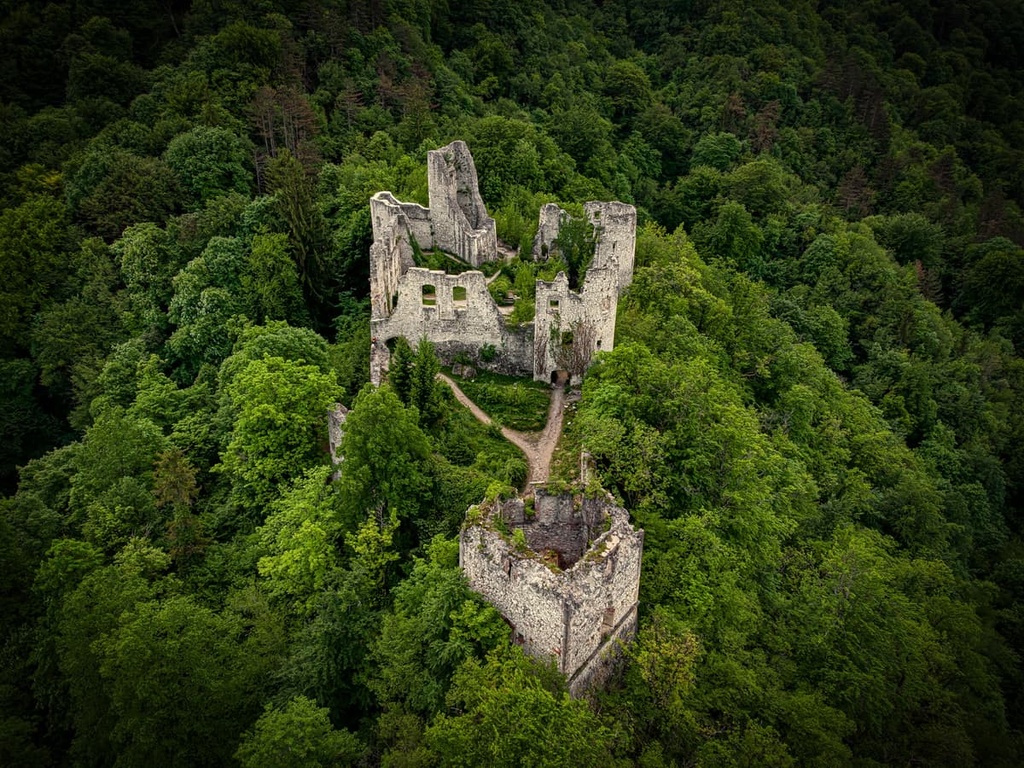
One of the most valuable finds from these archaeological excavations was a bronze helmet. The Prince of Budinjak was believed to have worn this type of helmet to indicate his rank. It is one of the best-preserved examples of this type of helmet in the world. The helmet that was excavated from the region is also on display at the museum in Samobor and you can see a replica of it at the Eco-center Budinjak.
In 1922, archaeologists in the region also found 1,600 coins of silver money that are believed to have been minted by the Celts. These coins are likely the oldest forms of coin-based currency to have been uncovered in the region.
The Roman army general Octavian led a military campaign that enabled the Roman Empire to conquer the area around the Sava between 35 and 33 BCE. Subsequently, the Žumberak area became a part of the empire and was subsumed into the province of Pannonia.
After the fall of the Roman Empire, Germanic, and Slavic tribes migrated across the Pannonian Basin. That said, there is little documentation about what happened to these people as there aren’t many records that attest to when Croat settlers actually arrived in Žumberak.
The earliest texts and archaeological finds that discuss the settlement of Žumberak come from the twelfth century. At the time, the region was located along the border of two nations: Croatia-Hungary and the German Empire.
There are a number of medieval buildings in the region that date back to this period. You can find them in places like Tuščak, Žumberak, and Lipovac, as well as in Okić, which is also known as the oldest fortified town in Croatia.
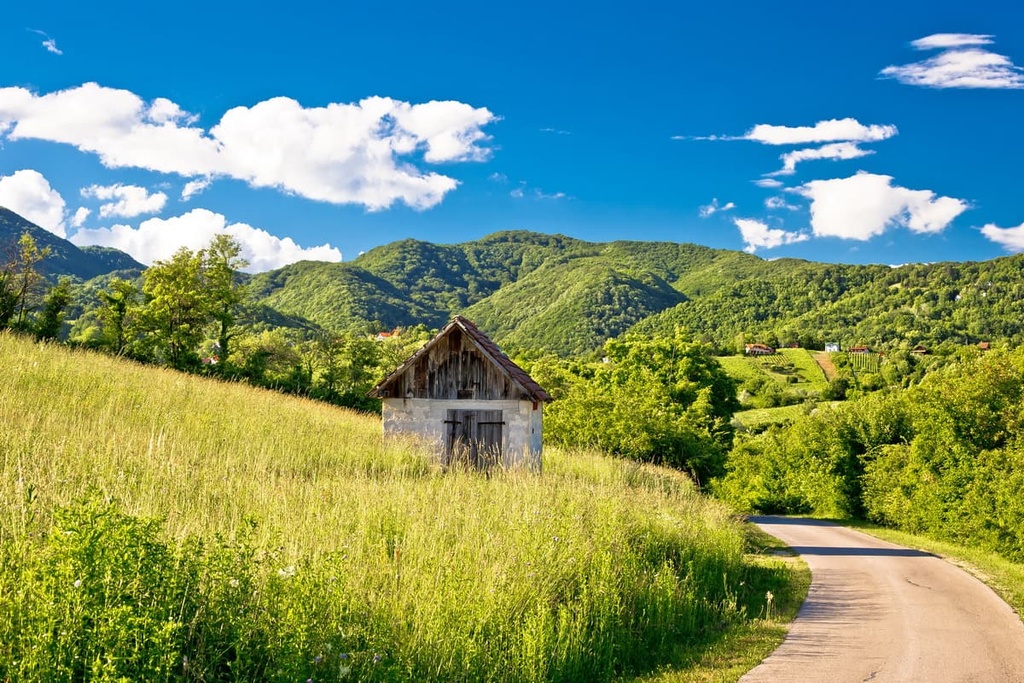
The settlement of this region was a response to the increasing threat of Ottoman invasion in the fifteenth century. The Habsburg rulers encouraged military communities to settle in this area. The hope was that the settlement of this region would provide the Habsburg empire with an additional line of defense against any invaders. This line of defense was known as the Croatian Military Frontier.
During this time, people known as the Uskoks also settled in the region. The Uskoks were a type of irregular soldier that fought for the Kingdom of Croatia under the Habsburgs. As a result, this mountainous region has long been referred to as the mountains of the Uskoks.
Nevertheless, with the retreat of the Ottoman threat in 1871, the Croatian Military Frontier was slowly abolished. Despite the disestablishment of the military frontier, however, the Uskoks and their culture had an important influence on the area.
For example, the Uskoks were primarily followers of the Greek Catholic Church. As a result, to this day, Žumberak is considered to be a stronghold for the Greek Catholic community in Croatia.
The names of some of the places in the nature park also have unique histories. For example, the village of Stojdraga is located in the northeastern part of Žumberak and its name has an interesting etymology. When the Uskok moved to the area in the sixteenth century, they called it literally ‘Stop Darling.’
This name comes from a period in the region’s history when the people in some of the area’s villages decided to work together to determine the official border between Croatia and Slovenia.
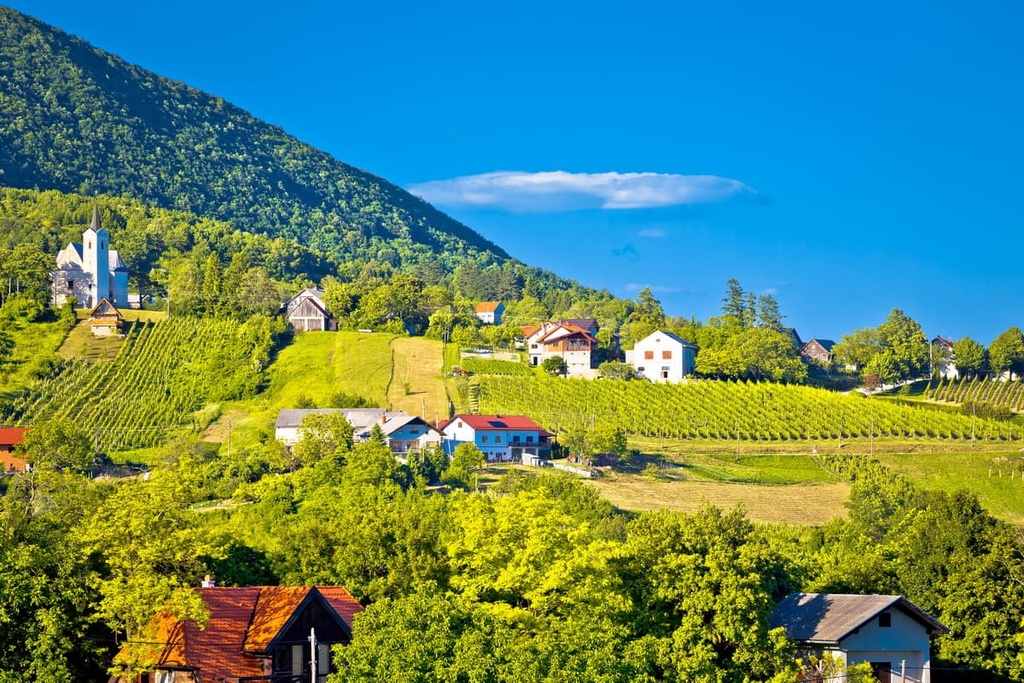
After failing to reach an acceptable compromise, both sides agreed that a Croatian boy from one side and a Slovenian girl from the other would start walking toward each other early in the morning. The border would then be established wherever the two children met up with each other during their walk.
On the morning of the race, the boy and girl started walking toward each other from their respective villages. However, during the walk, the boy’s shoe started to unfasten and he had to stop.
While the boy stopped to fix his shoe, the girl managed to walk quite a distance, thereby adding a considerable amount of territory to the Slovenian side of the border. The boy was upset at this series of events, so he yelled “Stop, darling!” to the girl, which made her stop in her tracks. The place where she stopped then became the border between Croatia and Slovenia and the phrase ‘Stop, darling’ became the name of the village of Stojdraga.
Žumberak - Samoborsko Gorje Nature Park is full of excellent destinations for visitors to explore. Here are some of the best hikes in Žumberak - Samoborsko Gorje Nature Park to check out during your next visit to the region.
Šoić's House (Šoićeva kuća) is one of the oldest mountaineering facilities in the Samobor Hills. It's a popular starting point for many hikes in the region as it’s located at the crossroads of some of the area’s best trails.
To the left of Šoićs house is an interesting and tough uphill climb that leads to a hillfort called Lipovec. The hike is fairly difficult, but once you get to the fort, the views are well worth the effort. From the fort, you can either return to Šoić's House or you can continue up to the ridge.
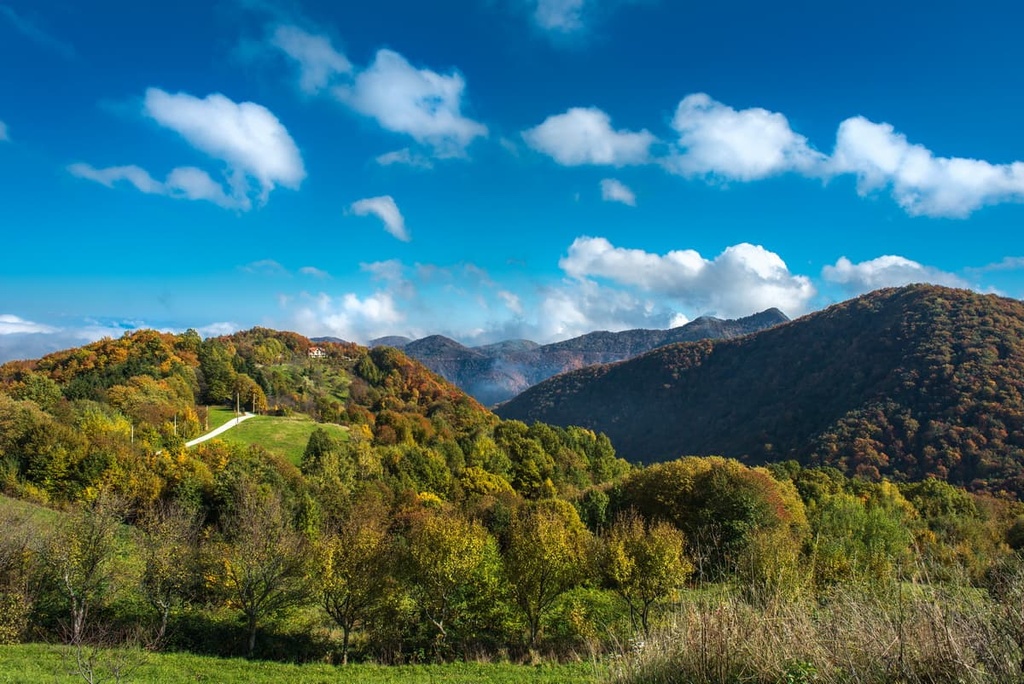
Once you gain the ridge, you can climb up to the mountain hut PD Željezničar on Oštrc (986 m/ 3,235 ft). From the hut, you can make a loop back to your starting point at Šoić's House. The entire route is about 7.4 km (4.6 mi) long and it takes most people around 3 hours to complete.
The Plešivica Trail is a 2.5 km (1.6 mi) hike that starts near Kapelišće at a hunting lodge called Klet Poljanice. From the trailhead, the path climbs up to the top of Noršićka Plešivica.
Once you get to the summit, you can sit back and enjoy the views of the surrounding area. You can then follow your uphill route back to the trailhead or you can take a trail that leads to the western side of the mountain and make a loop back to the parking area.
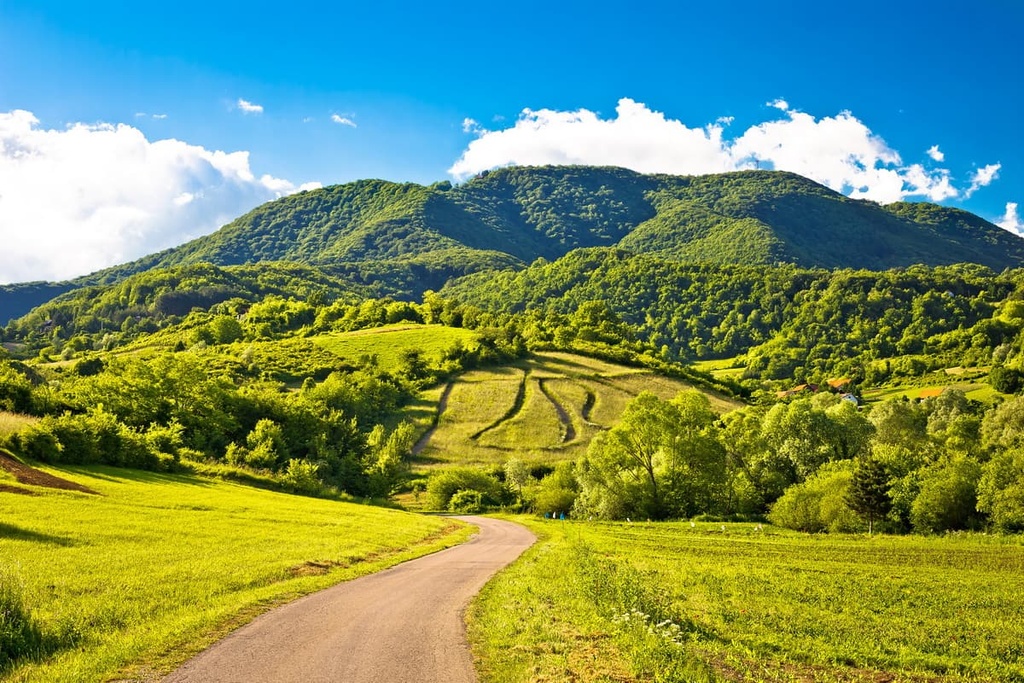
Due to the relatively short nature of this trial, most people can complete it in under an hour, making it a nice choice for visitors to the park who are short on time.
The aptly named Sveta Gera Trail takes you to the summit of Sveta Gera, which is the highest peak in the park and in the Žumberak Mountains as a whole.
There are a number of trails that you can take to reach the summit of Sveta Gera, which is located on the border of Croatia and Slovenia. One option is to follow a 13 km (8.1 mi) path that starts near the village of Sošice.
From the village, the trail climbs steadily uphill through forests and meadows until you reach the summit. Due to the length of this trail, most people take about 4 to 5 hours to complete this hike.

Looking for a place to stay near Park Prirode Žumberak - Samoborsko Gorje? Here are some of the best cities and towns to check out during your next trip to the region.
Zagreb is the capital and largest city of Croatia. It is located in the northwestern part of the country along the Sava river. The metropolitan area of Zagreb extends far beyond the city’s administrative limits and has a population of about 1.2 million people.
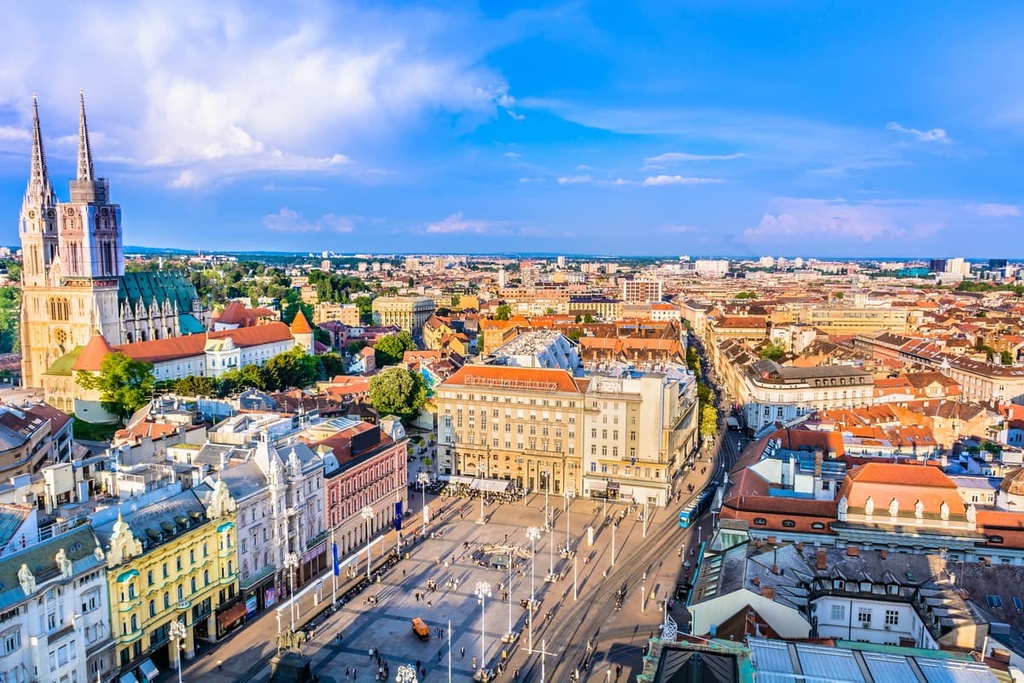
The city of Zagreb lies to the southeast of Park Prirode Žumberak - Samoborsko Gorje. But the city is still relatively close to the park, so it’s a good place to base yourself for a weekend outing or even a day trip to Žumberak - Samoborsko Gorje.
Plus, Zagreb is a city with a rich history that dates back well before the arrival of the Romans. While in Zagreb, you can experience breathtaking architecture, amazing museums, and incredible art galleries. The city also boasts every possible accommodation option you can think of and you can get there by road, rail, and air.
Samobor is a small town in Croatia that’s located about 20 km (12 mi) from Zagreb and has a population of about 40,000 people. It is a beautiful town with many historic buildings and monuments that’s situated just below Nature Park Žumberak - Samoborsko Gorje.
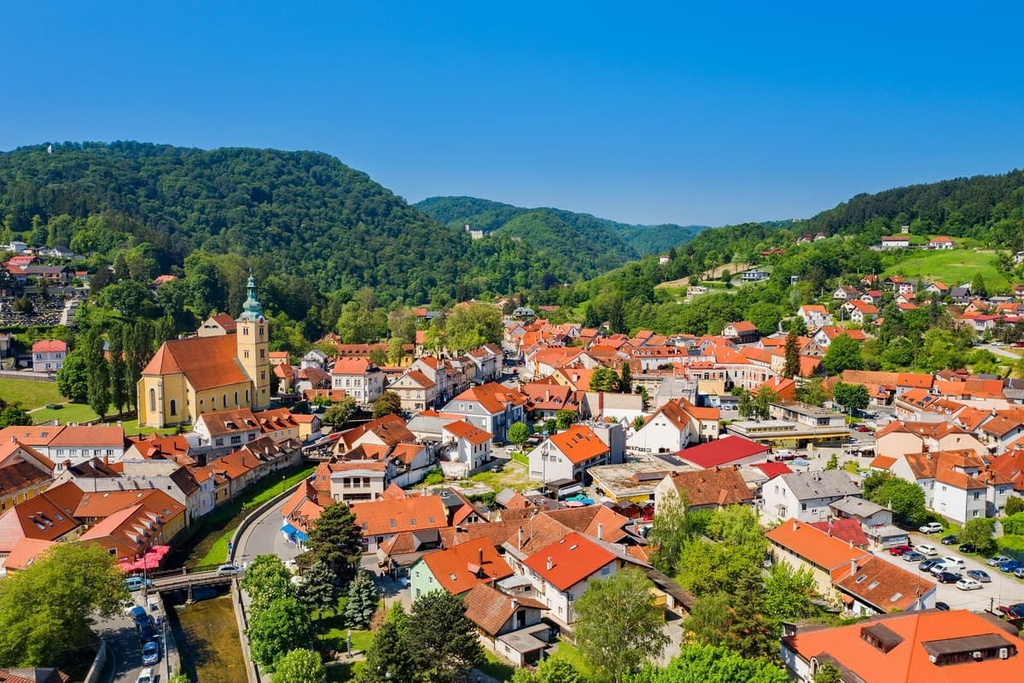
The best way to get around the town of Samobor is on foot, though you can reach it via rail or road. There are many bars and restaurants in Samobor that serve traditional Croatian cuisine for visitors to enjoy, too. The town of Samobor also has a plethora of accommodation options for visitors to choose from, including hotels, campsites, and mountain huts.
Ljubljana is the capital and largest city of Slovenia. Even though Ljubljana is located in a different country from Žumberak - Samoborsko Gorje, it is still within driving distance of the park. The city is also Slovenia’s cultural, scientific, economic, and political center, and it has a population of around 280,000 people.
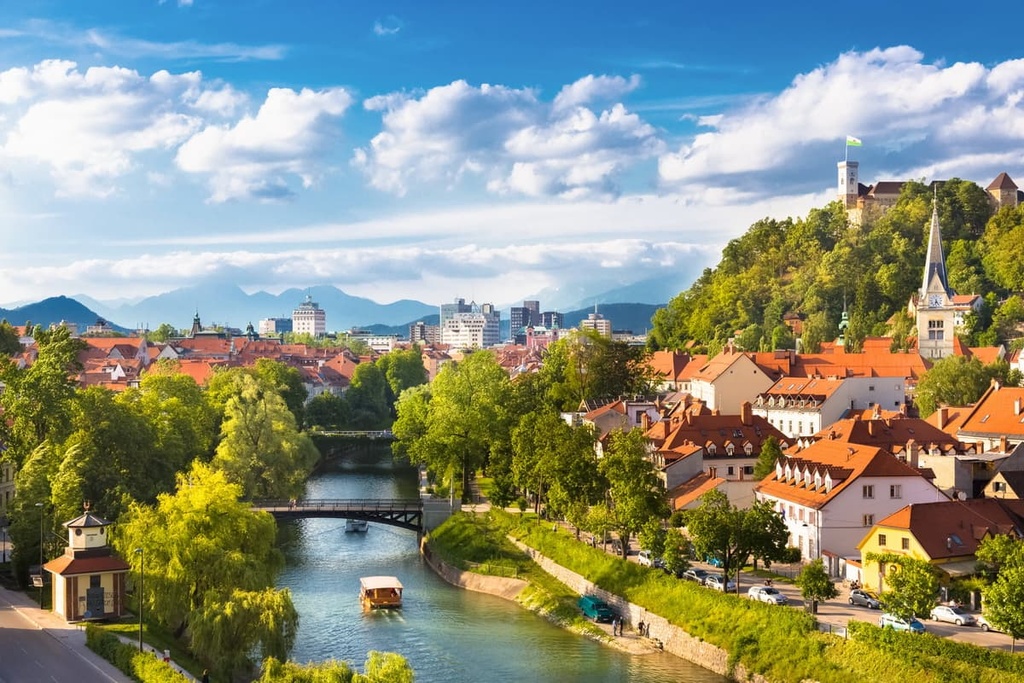
The city of Ljubljana has a lot to offer in terms of culture and history. For example, the city is home to 2,000-year-old Roman ruins, and there is a castle in Ljubljana that dates back to the Middle Ages.
Ljubljana offers a wide array of accommodation options for visitors, including hotels and B&Bs. You can also get to the city very easily from other major destinations in Europe by air, rail, and road.
Explore Nature Park Žumberak - Samoborsko Gorje with the PeakVisor 3D Map and identify its summits.








